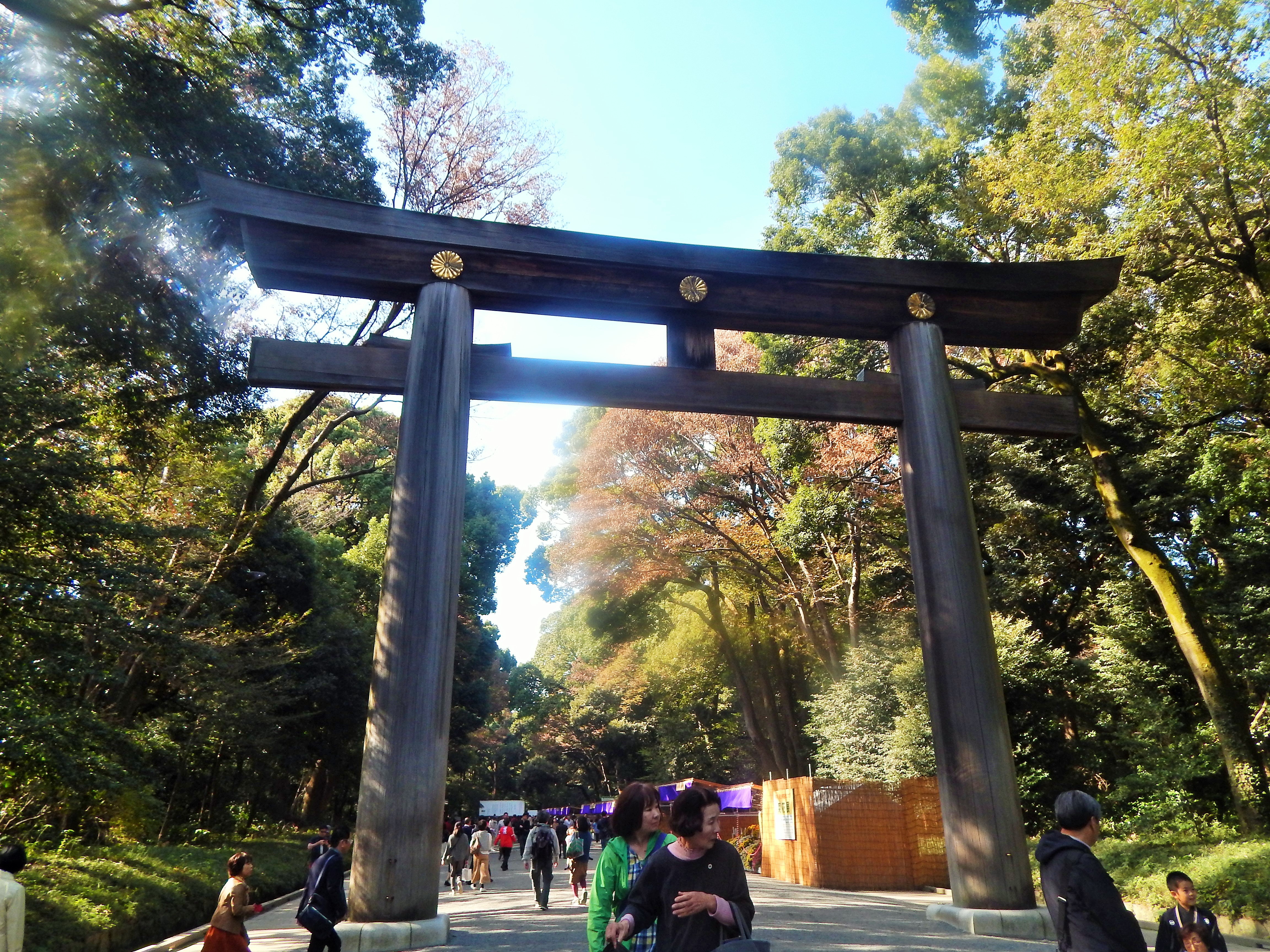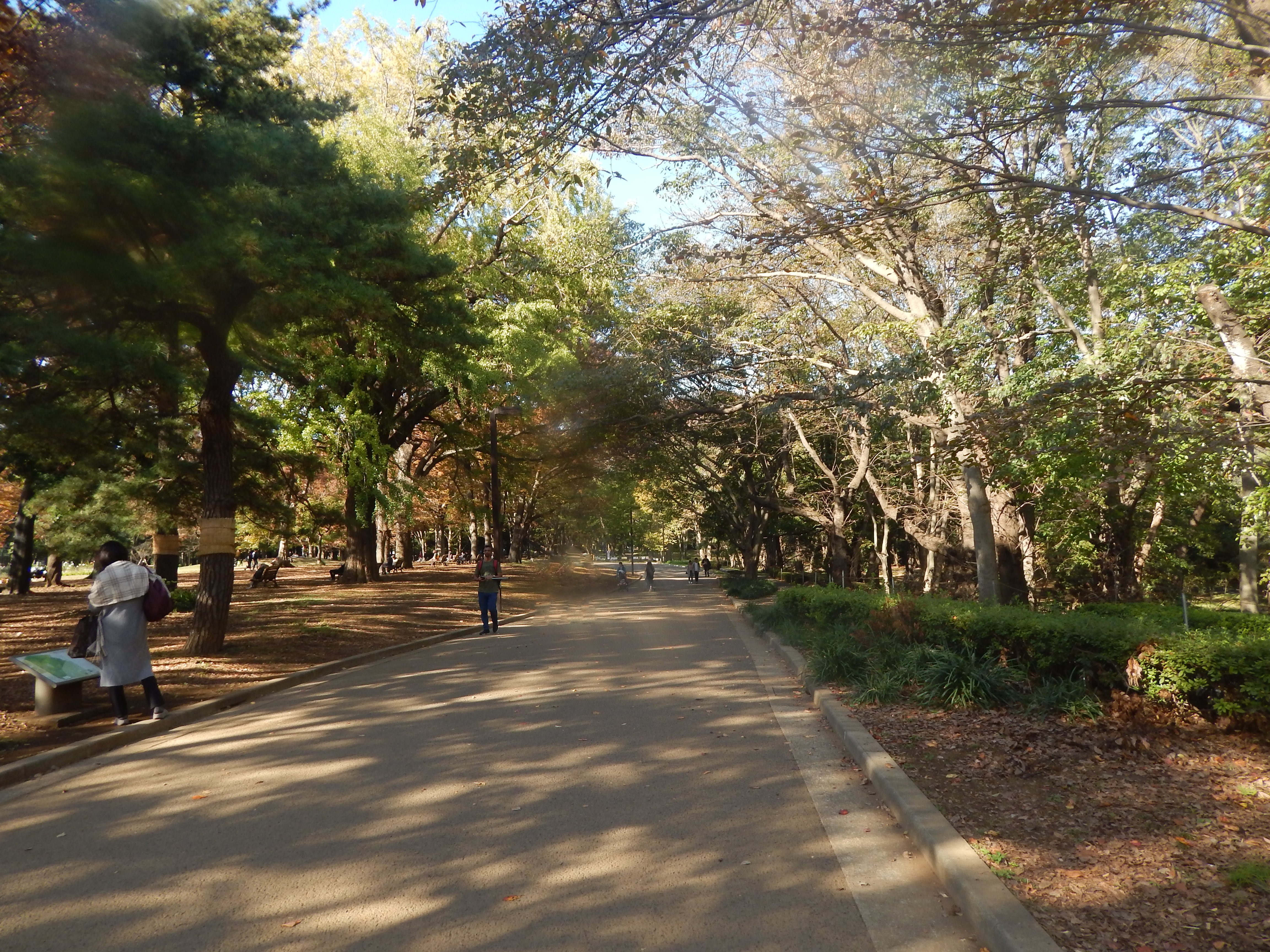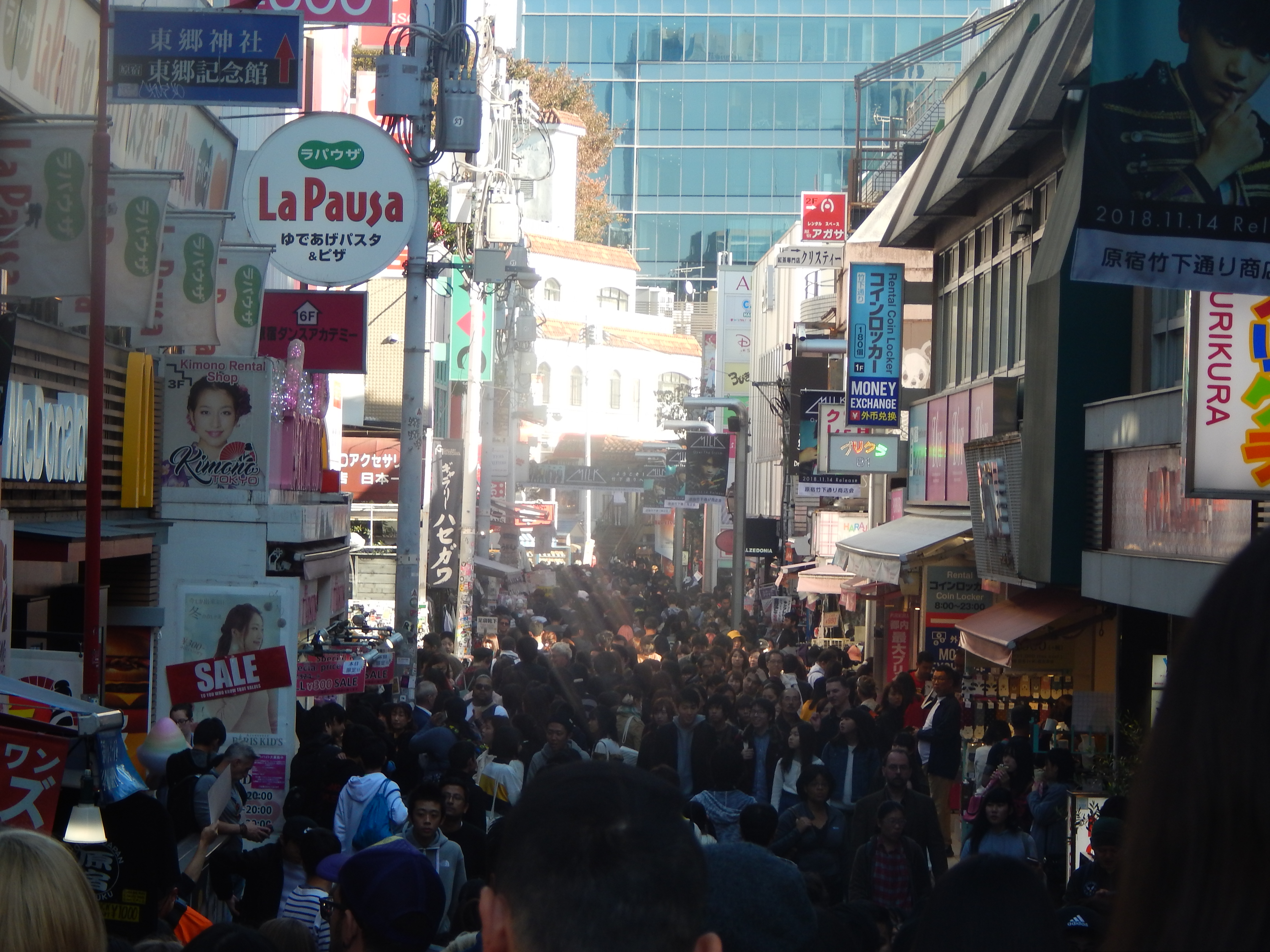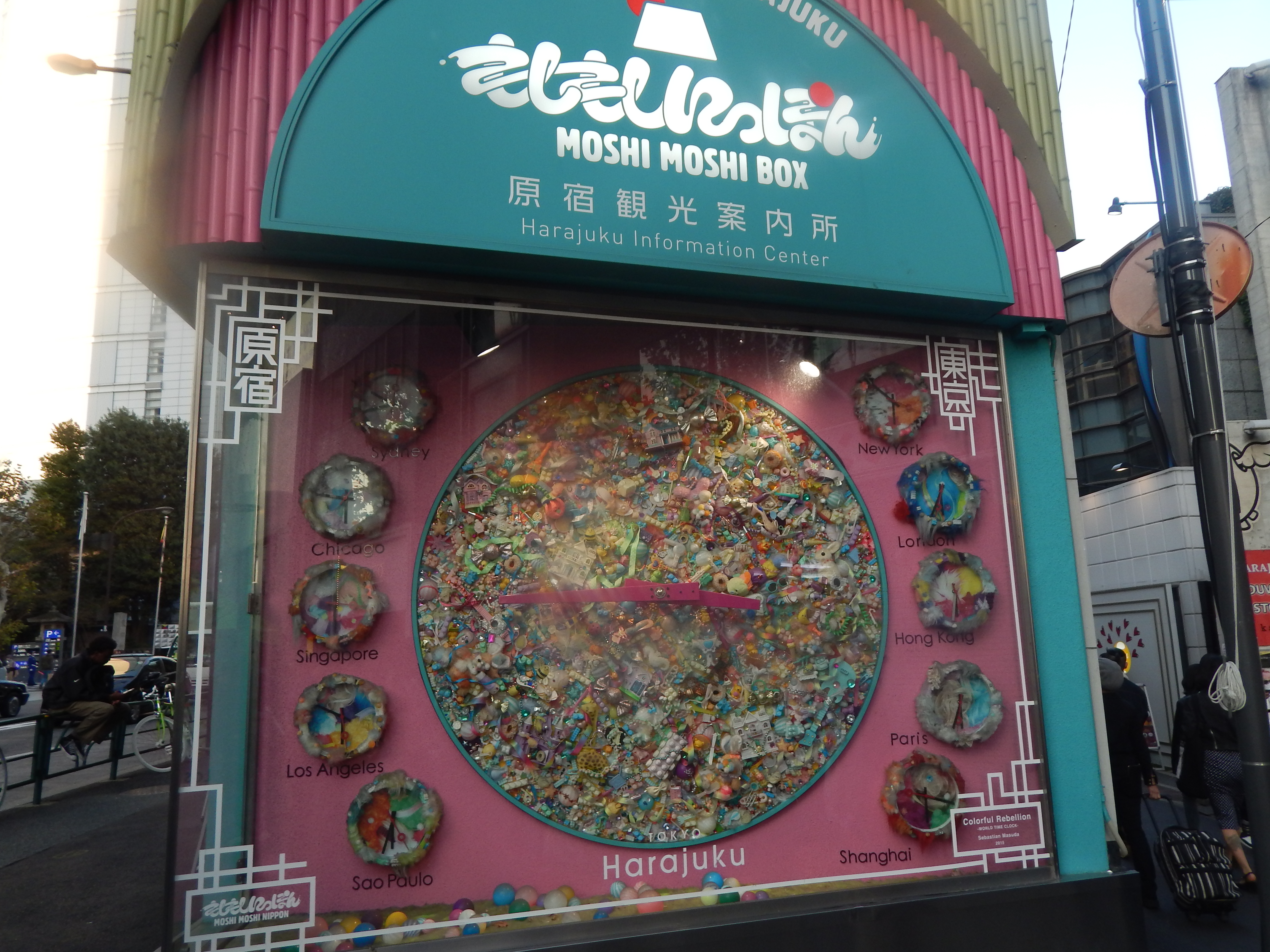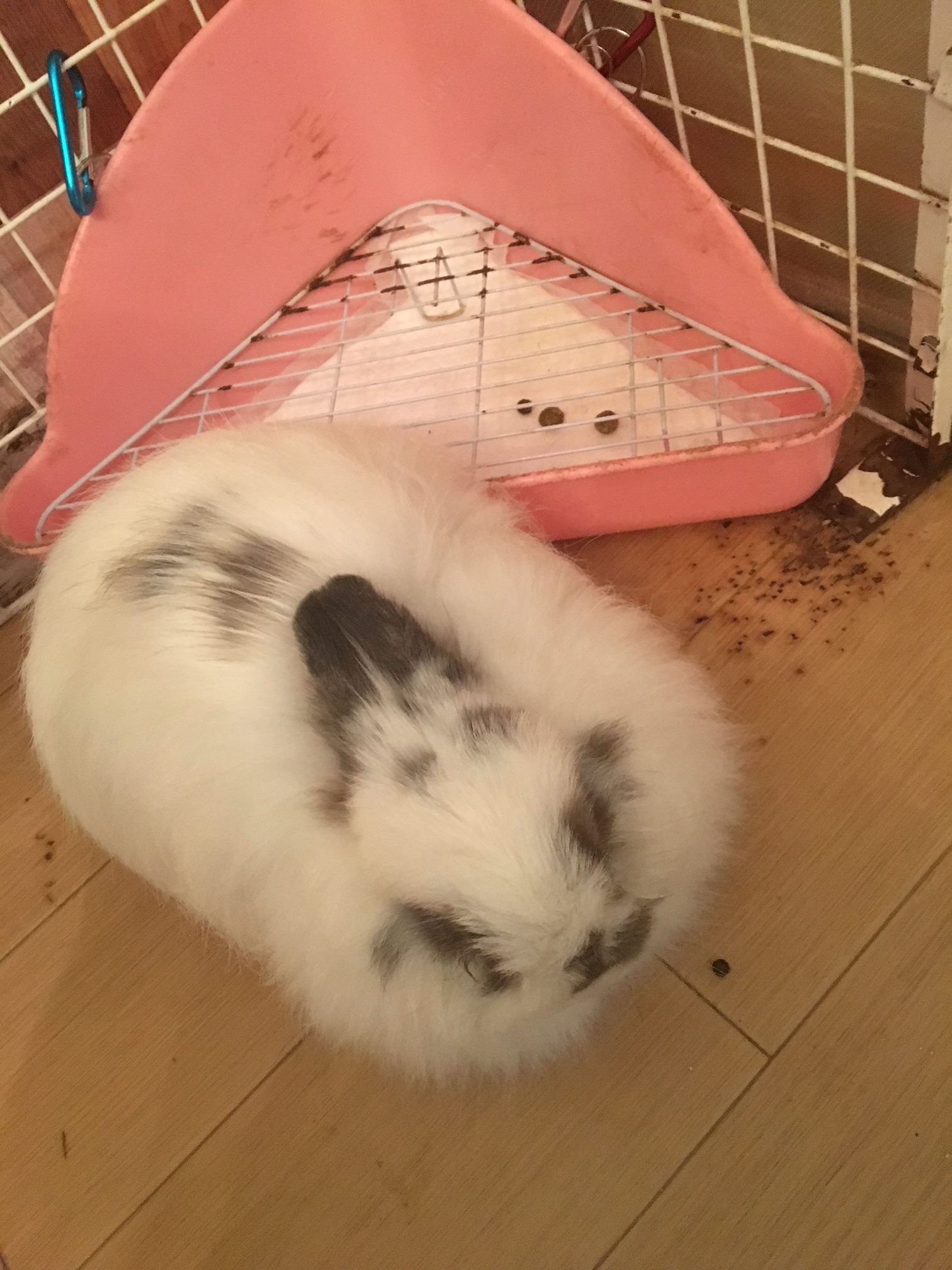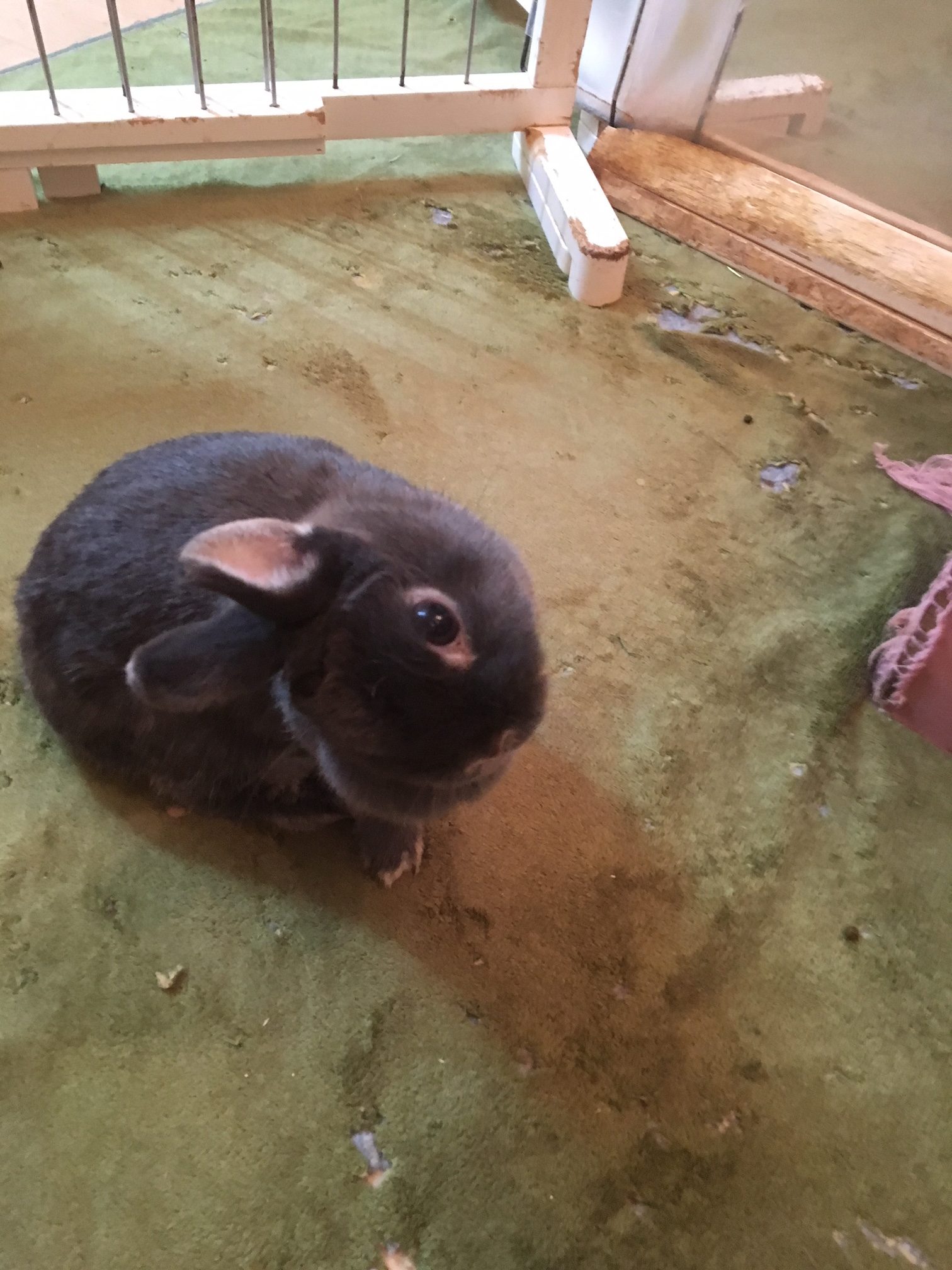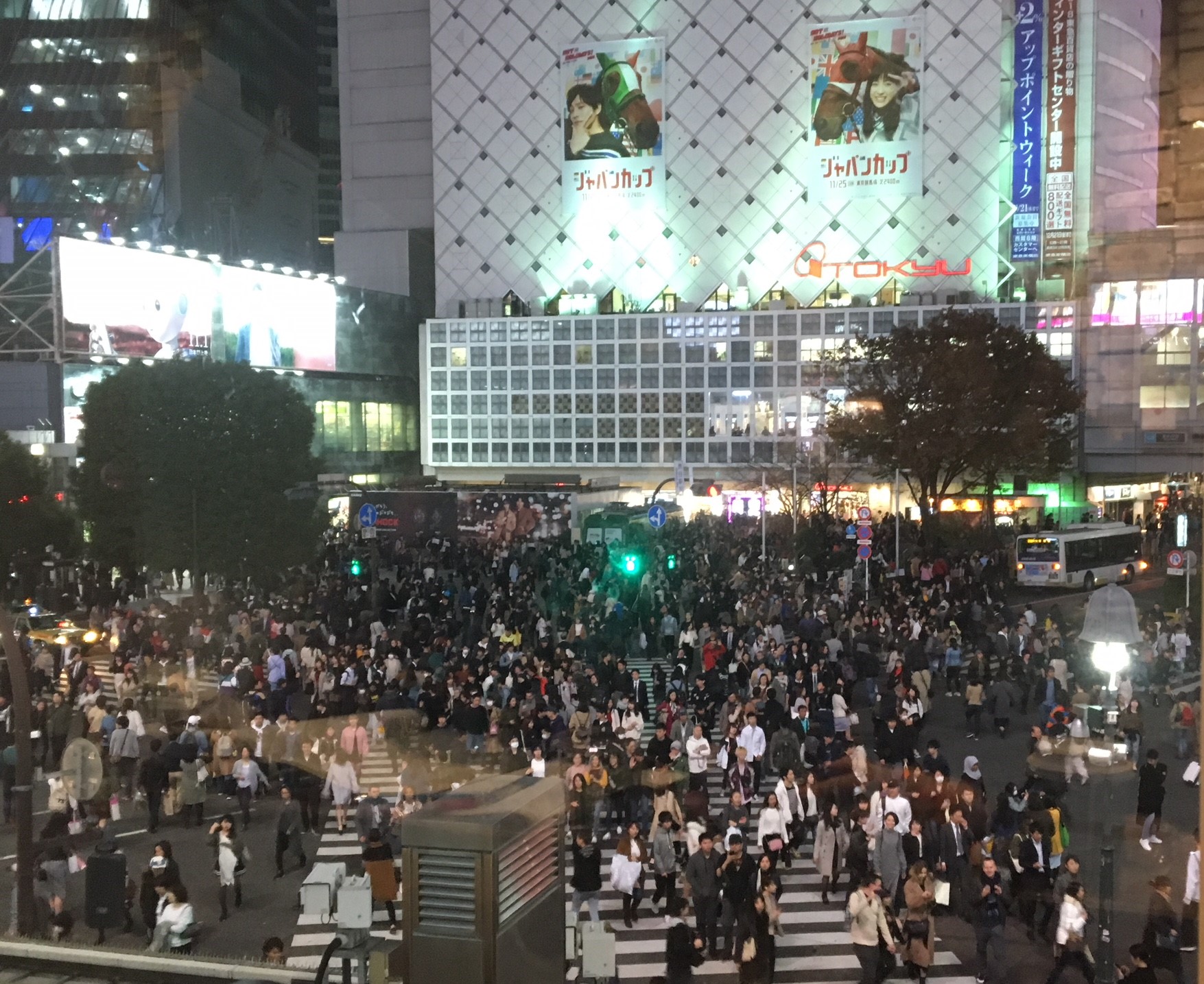(I am back home right now, but please try to bear with me as I write my last two blogs in a quick manner.)
Konnichiwa! Two months have passed during my time abroad in Japan, which means it is near the homestretch of the program. This post will talk about events that happened during November. In addition, I will also be talking about some of the Olympic venues that I visited. Along with my other four class, there is an independent research class called Perspectives in Japan with the theme of 2020 Tokyo Olympics. I had to choose one aspect of Olympic preparation and conduct research on my own. Since my topic was sustainable venues, I visited some of the venues that will be used for the 2020 Summer Olympics. With that being said, 始めましょう!
Thursday 11/08- Our economics class took a field trip to the Kirin Beer Yokohama Factory where we went on a tour about how the beer is made and processed at the factory plant. The brewery is the only major Japanese manufacturer to produce their own malt and selecting their finest ingredients by traveling far to select the highest-quality of it. After the tour, we got to do some beer tasting. It was my first time tasting beer and let me tell you that it was the most disgusting thing I ever drank (in my opinion)! The taste was very bitter like some cough medicine your parents forced you to take when you were sick, and I wanted to throw up! I even tried both alcoholic and non-alcoholic beers and they still gave that same bitter taste. The only thing I enjoyed was the snack that was provided with the beer tasting. This was the most interesting field trip that I ever went to, and the first one where I drank (remember, 20 is the legal drinking age in Japan).
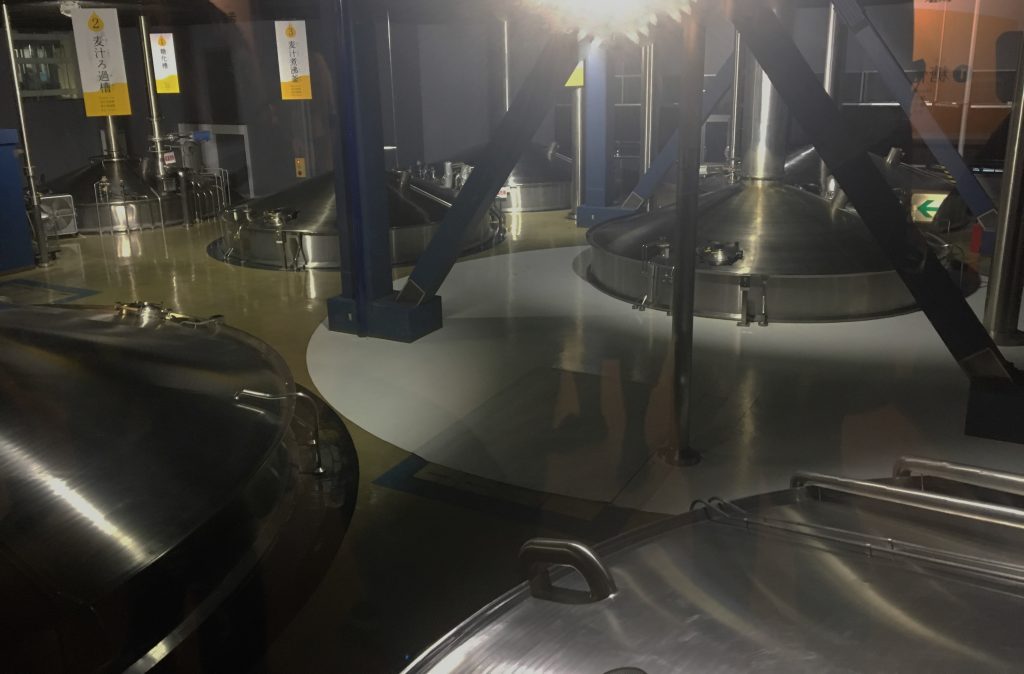
Sunday 11/11- I decided to have a nice and relaxing Sunday by going to Umi no Koen, a marine seaside park with the only beach in Yokohama. Nearby the park was an amusement park with an aquarium called Sea Paradise which is why you can see a rollercoaster on the shoreline. (I actually visited the amusement park later on this month). Although it was nothing compared to the beaches back home, I still had a great time sitting on the sand and listening to the sounds of the ocean.
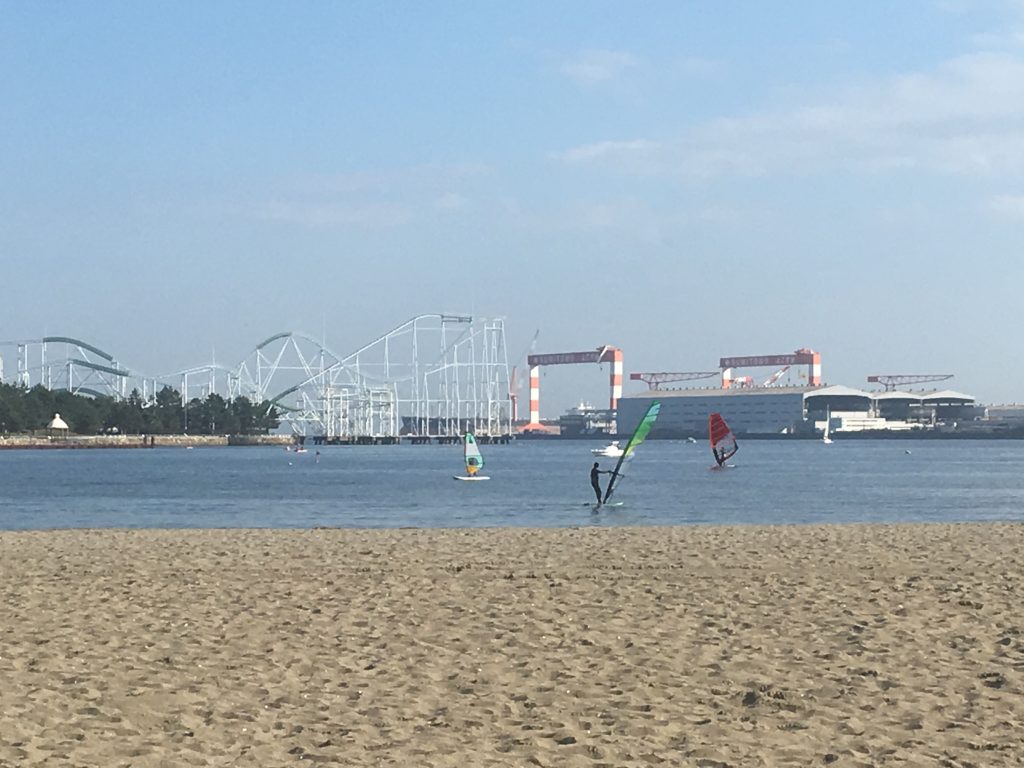
Tuesday 11/13- Our Japanese Cultural Studies Class went to a concert in Shinjuku called Mangekyo. Mangekyo was a modern taiko concert with modern image projection mapping and very stylish costumes. This was unlike any taiko concert I had ever seen. I thought the performers were good-looking, and had great energy. I also thought they were having fun and so was the audience. I was only allowed to take a few pictures near the end of the show.

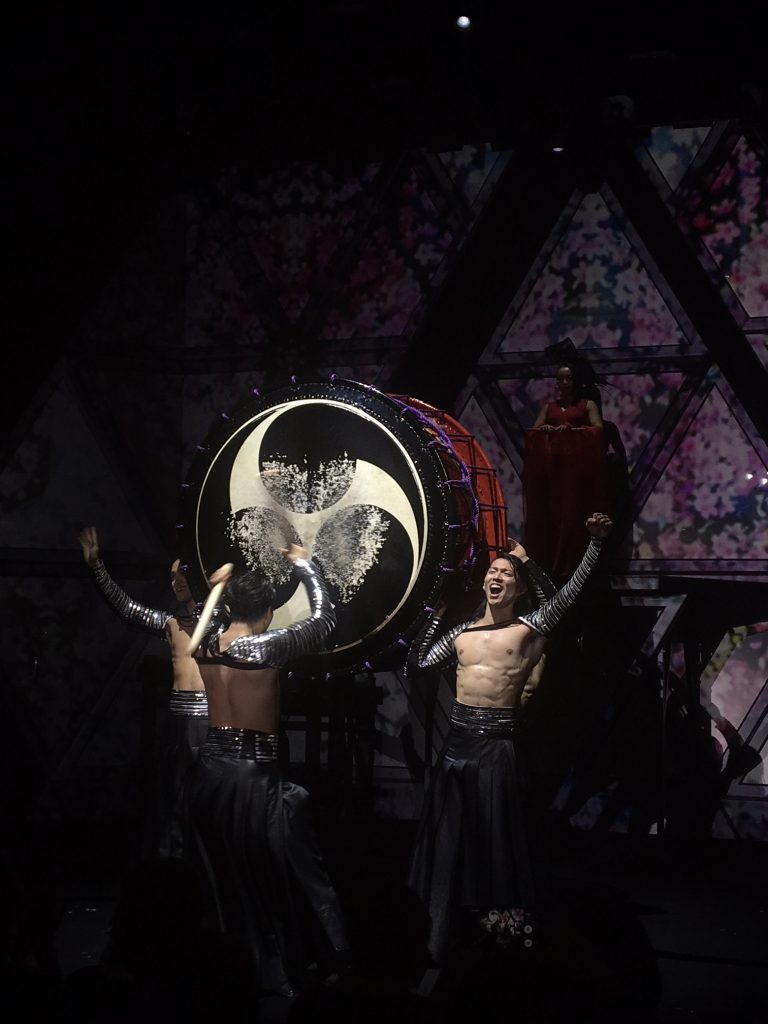
Friday 11/16- I went to see the “Bohemian Rhapsody” movie in a theater nearby Kamiooka Station. To get tickets, you can pre-purchase them online ahead of time, then when you arrive at the theater you get the ticket out of a machine. For snacks they have the typical ones served at the movie theater except for popcorn, the only original flavor they have is shoyu-butter which was actually pretty tasty. As for the movie, I thought it was a great storyline with fantastic music. The one thing about movie theaters in Japan is that everyone stays until the credits have finished playing. It is because they are showing respect to the directors and producers who created the film. I found that pretty interesting since I never stay for the credits because they are somewhat boring. At least there was good music playing during that portion.
Saturday 11/17- I took a little trip to the two most populated cities home to Japanese pop culture: Harajuku and Shibuya (round 1)! My first stop was at Meiji Shrine, a shrine dedicated to the spirits of Emperor Meiji and Empress Shoken. Since it was also the shichi-go-san (Seven-Five-Three) Festival that weekend, I saw many families with their kids dressed in kimonos. Nearby, I took a stroll down Yoyogi Park, one of Tokyo’s largest city parks which featured a lot of nature. Fun Fact: Before becoming a city park, it was the site of the Olympic Village for the 1964 Tokyo Olympics. From the religious and peaceful side of Harajuku, I went through one of most busiest and crowded places: Takeshita Street. This street is known for many shops, boutiques and restaurants along the way, including the largest Daiso store (Japanese version of the Dollar Tree Store)! It is especially crowded during the weekends if you wish to go during that time. I also tried one of Harajuku’s famous crepes. After pushing my way through the crowds, I went to a rabbit café called Ra.a.g.f. The cost was 700 yen for a half-hour session along with 150 yen to feed the rabbits and drinks for yourself. The bunnies I played with were really cute! Then, I wrapped up my trip by conquering the famous Shibuya scramble crossing street. It was amazing to see so many people crossing the street all at once with some taking selfies in the middle of the crosswalk. I even saw the view of the crossing from a nearby Starbucks and it was amazing! And that was round 1 of my Harajuku/Shibuya trip!
Sunday 11/18- The Enoshima Yacht Harbor was the first of the Olympic venues that I visited for my independent research. Before I go further, past Olympic venues have now become abandoned “ghost towns.” What Tokyo is trying to do for the 2020 summer games is to use existing facilities for 60% of their venues, including those that were used in the 1964 games. The Yacht Harbor was used for the yacht competition back in 1964 and will be used for the sailing events in the upcoming games. It has also been used for other sailing competitions as well.
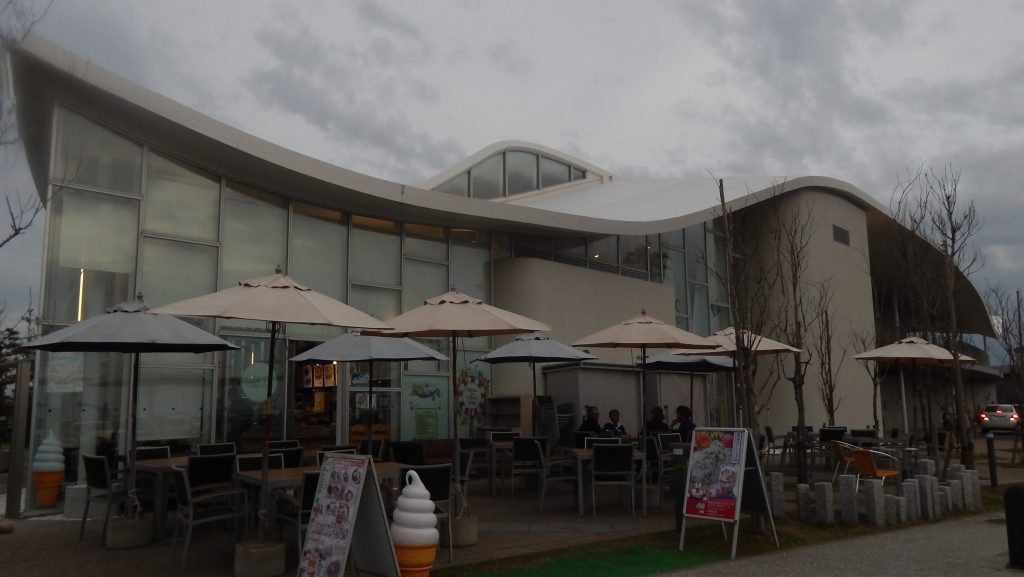
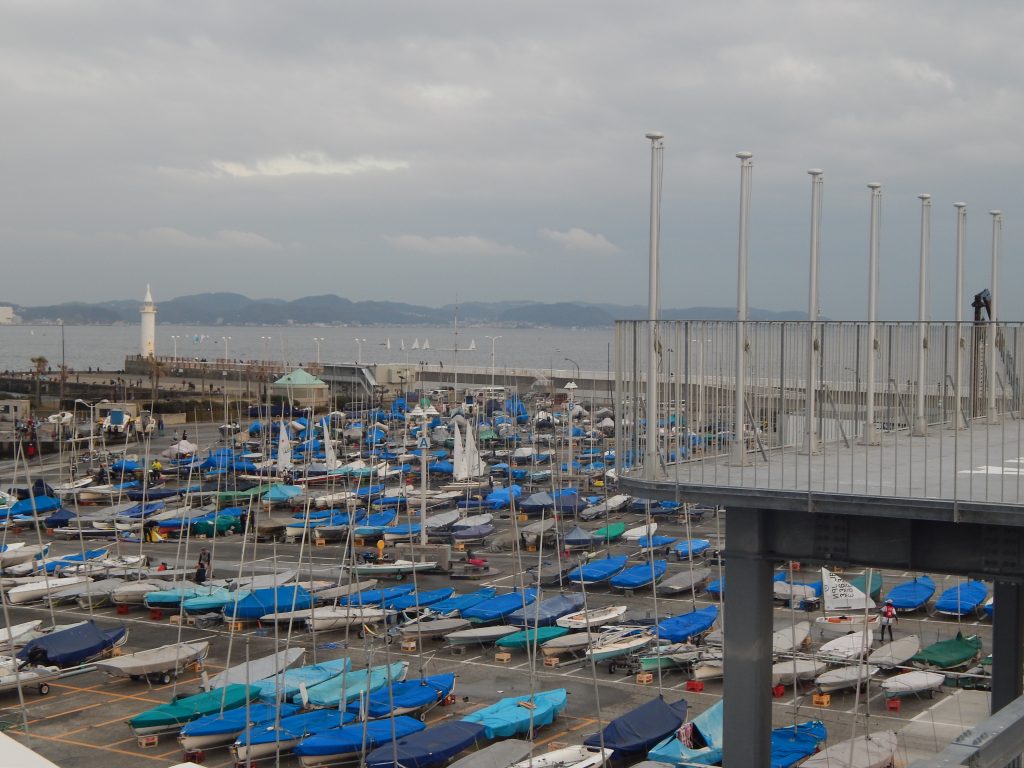
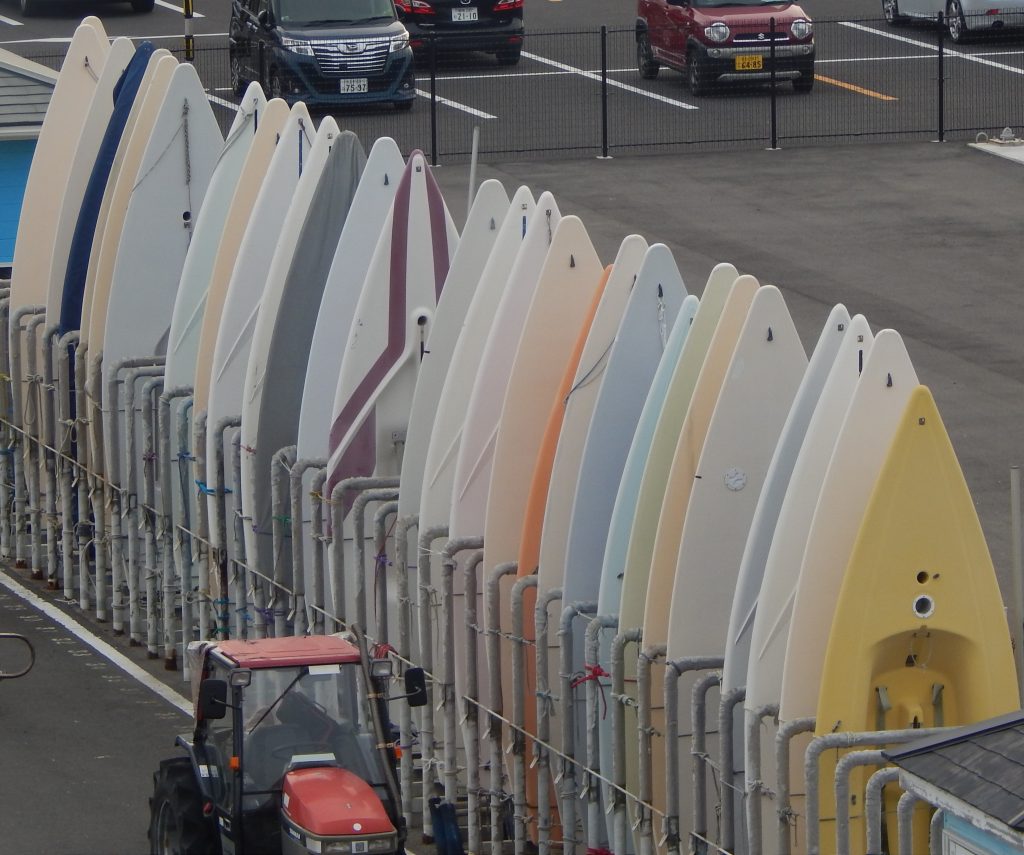
Wednesday 11/21- Around this time of year, many places have huge light displays called Illumination and they have become popular attractions. I went to one Illumination display with my KGU buddies, along with a few friends, at the Sea Paradise amusement park (the one I mentioned earlier in this blog) in Hakkeijima. It was really beautiful with tons of lights all over the place including a huge Christmas tree and a colorful light tunnel.
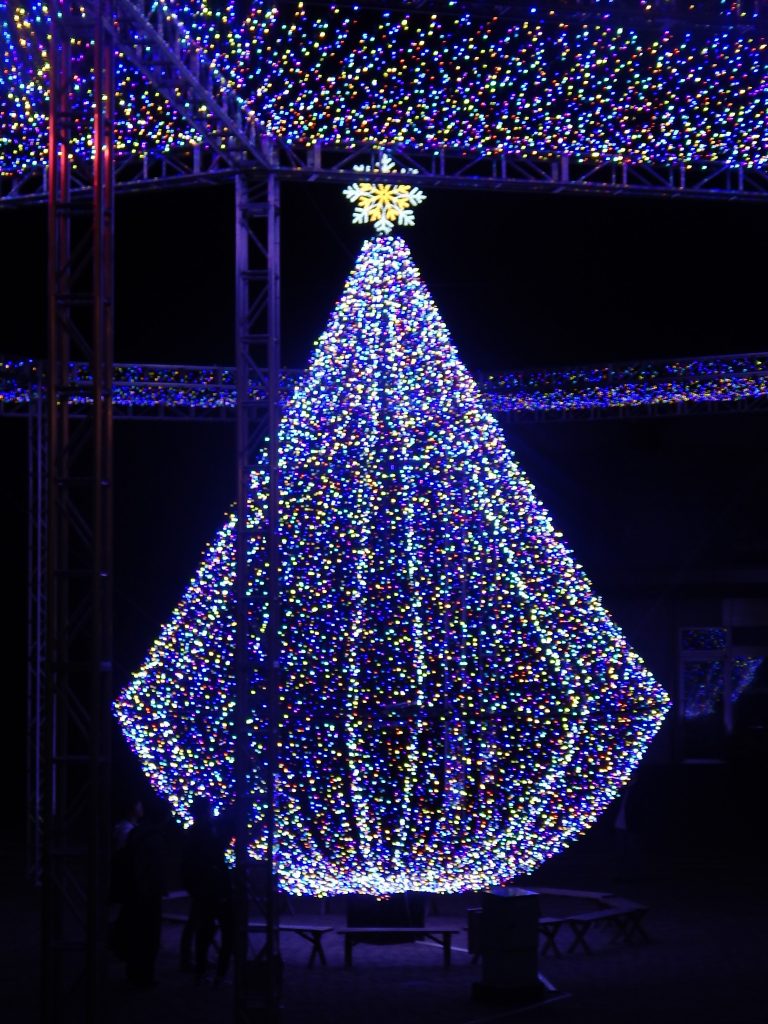
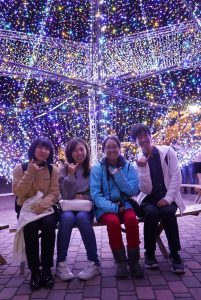
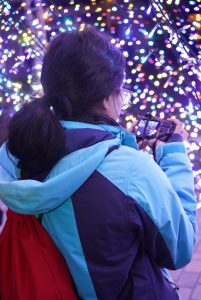
Thursday 11/22- Even though there was no Thanksgiving in Japan, our Japanese Cultural Studies professor took us out to dinner at a sushi restaurant. Earlier, I didn’t want to go because I was very tired, plus there were some personal issues I encountered recently. However, my professor encouraged me to go to experience a Thanksgiving in Japan. So I went along with my classmates, and we got to have sushi with my professor along with her two daughters. The sushi was really good including the flower that was part of the plating decorations. (In Japan, everything on the plate is made to be eatable so it was okay!) The one thing that was embarrassing/awkward about the dinner was when the head of the sushi restaurant pointed out and asked if we were foreigners. Then our professor told him where we all came from, enthusiastically. One little pet peeve that I adapted during studying abroad is when I am in a place with few tourists, and someone points out if we are foreigners. They weren’t acting racist or anything, but it just makes me feel a little awkward standing out as a 外国人 (foreigner).
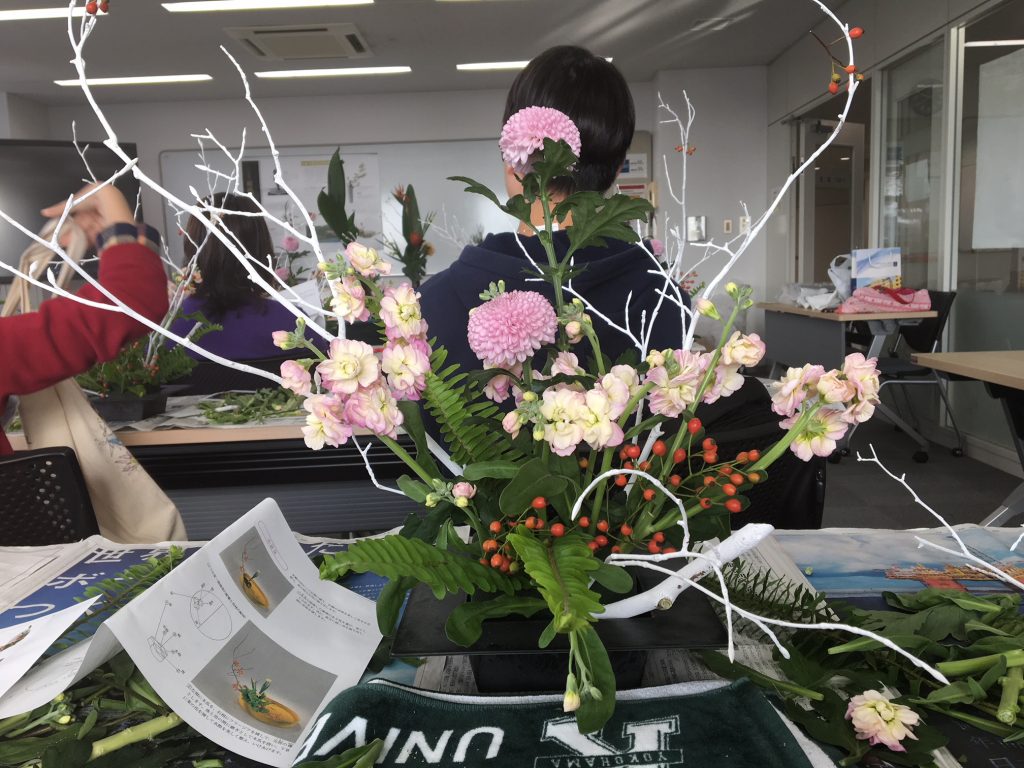
Saturday 11/24- The International Center arranged a kado (flower arrangement) experience for the international students. We were taught by a professor from Kyoto University about the art of ikebana. When creating ikebana, you have to find balance as you are arranging the flowers and the branches plus there has to be no symmetry in between. It was a bit difficult trying to fit all my plants in a perfect place. The end result did not come out as perfect, and at one point I wanted to throw it out. But temporarily, I put it on my balcony in my dorm.
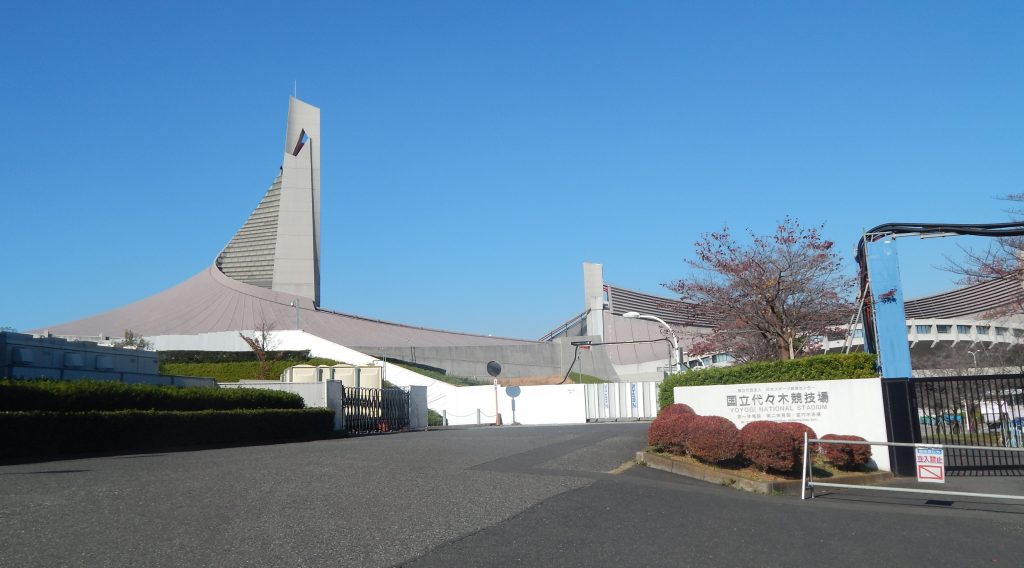
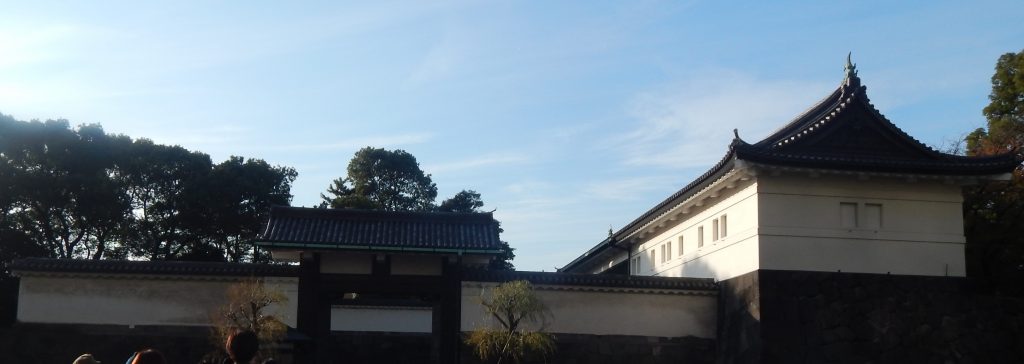
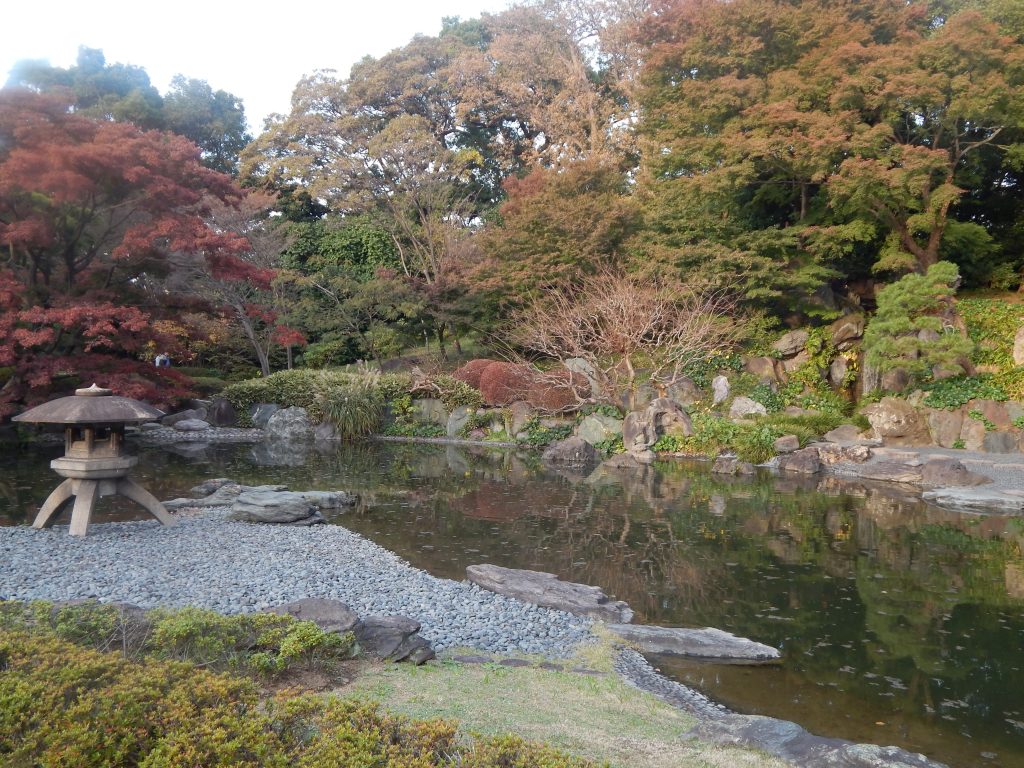
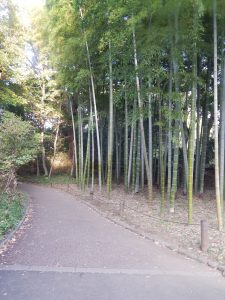
Sunday 11/25- These next two places were also future Olympic venues. The Yoyogi National Stadium which is nearby Yoyogi Park was used for the basketball and aquatics events back in 1964. For the 2020 games, it will be used for handball events and the para-badminton wheelchair rugby events for the Paralympic games. The Imperial Palace Garden was not used as a venue for the 1964 games, but another goal that the Tokyo 2020 Olympics Committee is trying to achieve is the use of nature within the city and city within nature. This venue includes traditional landscape Japanese gardens and will be used for the race-walking events.
(Another sustainable venue for the Tokyo Olympics that I mentioned in my first blog is the Yokohama Baseball Stadium which will be used for the softball and baseball events.)
Tuesday 11/27- The International Center arranged another cultural event for the international students. This time, it was a sado experience that involved kimono dressing and tea ceremony. For the tea ceremony portion, we were taught how to make the tea using the traditional tools that are used for the tea ceremony. While I was waiting for my kimono dressing appointment, I actually took part in the tea ceremony for a second time where the host actually makes the tea. Then it was time for my kimono dressing experience. I was dressed in the complete kimono outfit, including tabi (Japanese socks) and geta (Japanese wooden shoes). I even got my hair styled in a traditional kimono hairstyle.
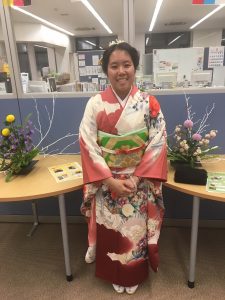
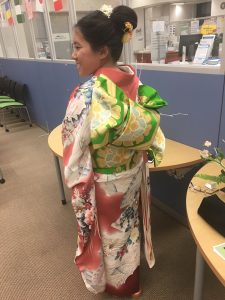
Friday 11/30- There was a farewell party for the departing International students. Each of us gave a short speech that we prepared in Japanese class. I was a bit nervous not because I had to say it in Japanese, but because of another reason. Compared to the other study abroad participants, my experience was not as perfect as theirs. I made a lot of mistakes and had many struggles. There were also times where I thought my Japanese wasn’t improving (even though several people said I spoke good Japanese). I know I shouldn’t be beating myself up with what happened to me in the past, but I was also thankful at the same time to the people that helped me along the way and believed in me like the International staff and my KGU buddies. Now enough said about my speech! I also gave each of the International staff members a box of Hawaiian chocolate-covered macadamia nuts as my way of saying thanks for all they have done. For future study abroad participants, always bring a little something from your hometown to give to the ones who have helped you on your journey. That includes your host family, International staff members, friends, etc. After the farewell party, we went to a izakaya in Yokohama with our KGU buddies for a drinking party. Before I leave Japan, I wanted to have a chance to drink sake, so this was a perfect chance. I had the umeshu drink, and it tasted great! Overall, I had a blast drinking with my KGU buddies as this was one of the last times we would be together before parting ways.
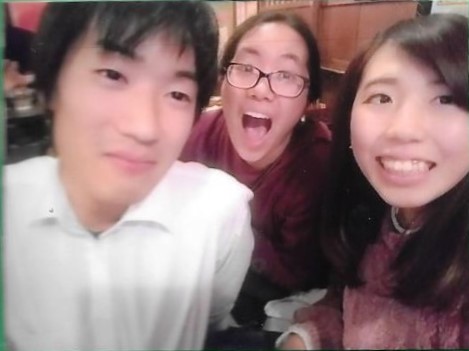
Well that was a quite a mouthful that happened during the month of November. I know it was jam-packed, but I had to do a lot because I was running out of time.
じゃあね!
ーアリッサ



